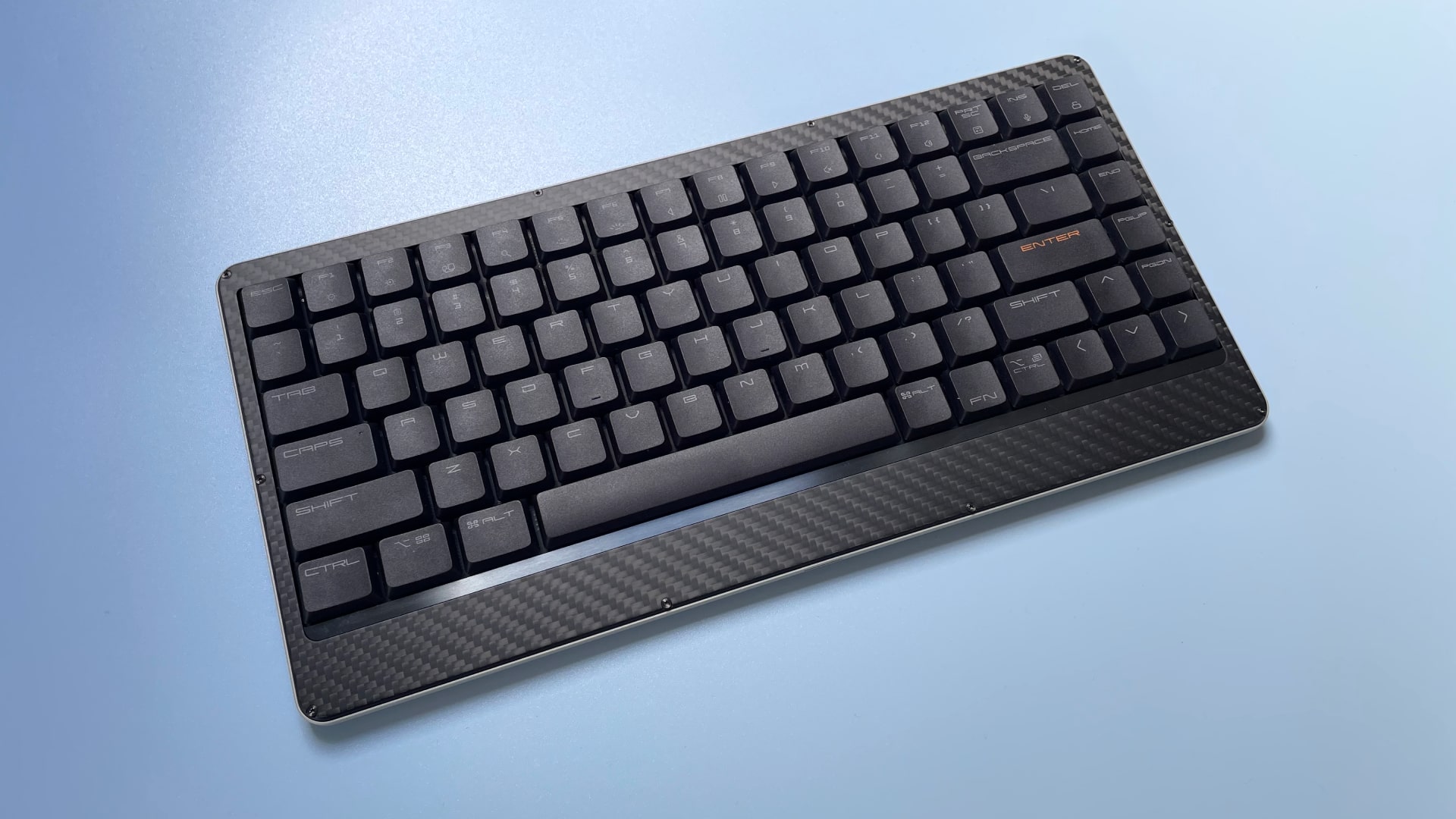
Lofree Edge: Two-minute review
The Edge is Lofree’s attempt to make a mechanical keyboard as thin and as light as possible, and in that respect, it largely succeeds. But when you set aside this stated goal, is it actually a keyboard you’ll want to use?
Well, the most important metric – the typing feel – gets the Edge off to a positive start. Lofree has used custom Kailh POM linear switches underneath its low-profile keycaps, resulting in a soft, smooth action. It’s fast and comfortable, and we very rarely “bottomed out” when typing, meaning no sore fingers at the end of the day. It results in a quiet, satisfying typing sound that Lofree describes as “library-friendly.” We wouldn’t argue with that.

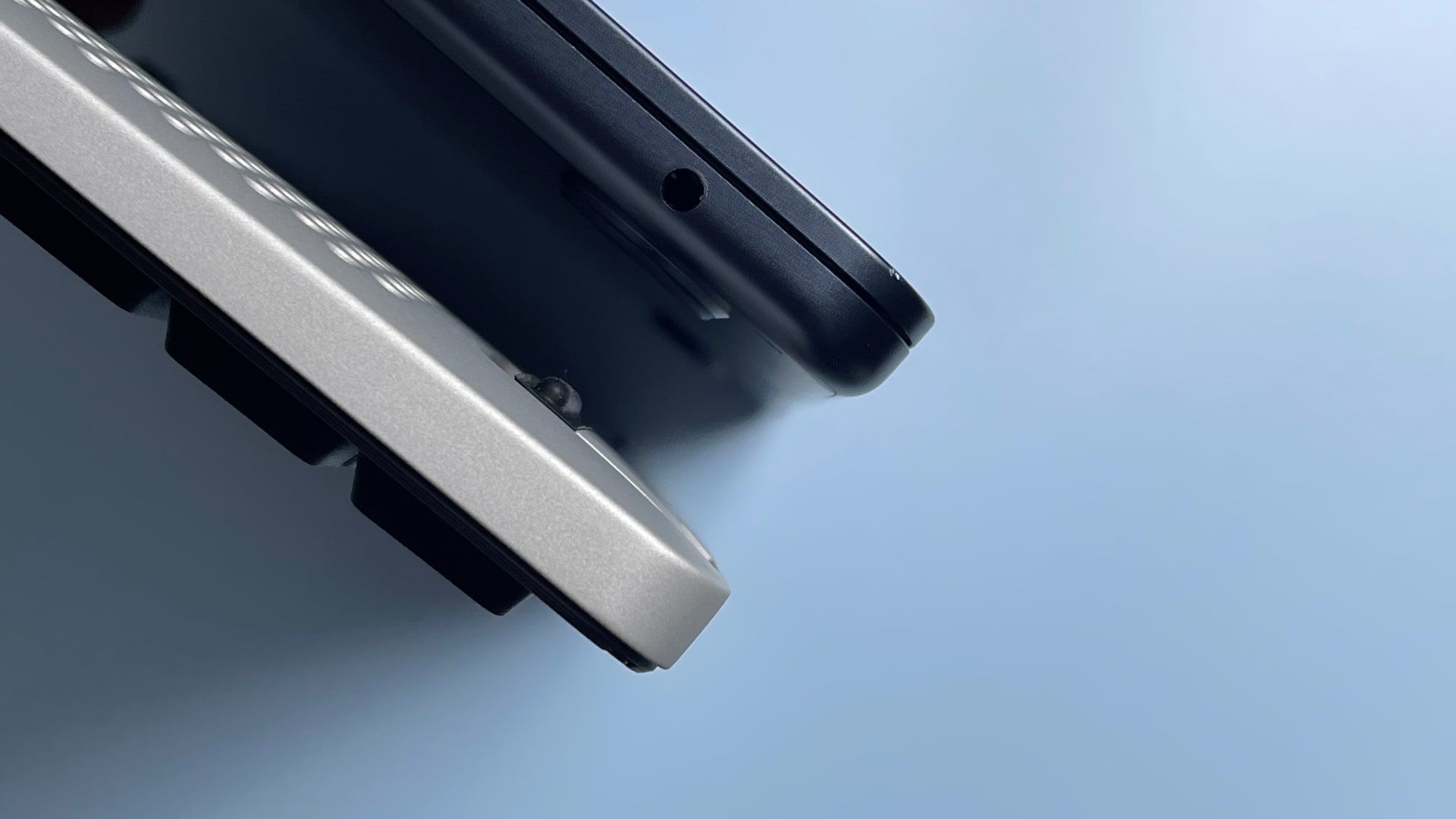
The Lofree Edge uses a compact 84-key layout that pushes the arrow keys close to the main body of the keys. That can make finding the right key a little tricky if you’re not used to this layout. It wasn’t a massive problem in games, though – the keys have enough of a raised bump to make finding them by touch simple enough, and games that extensively use the arrow keys are fairly rare.
Lofree has made the Edge as slimline as possible, cutting out extra weight and bulk so that it’s almost as thin as a MacBook Air. You get a magnesium chassis with many holes punched out of the back, low-profile keycaps, and cut-down key switches. Its chassis (excluding the keys) measures 31.9x15.5x1.3cm at its widest (or 1.8cm thick, including the keys). That makes it a dash thicker than the MacBook Air, but it’s close. And at 481g, it’s exceptionally lightweight.
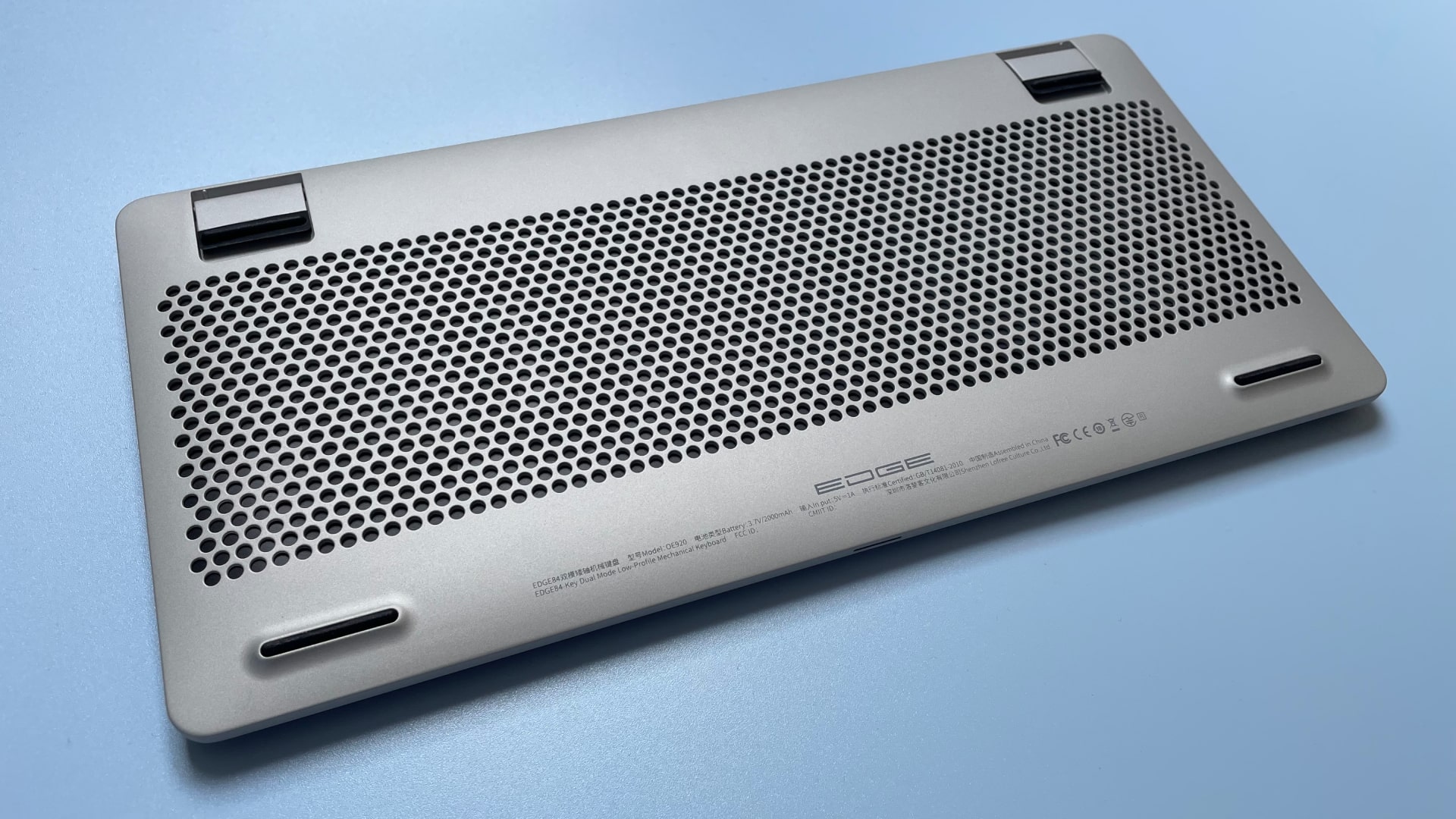
However, a byproduct of this process is that the Edge doesn’t feel as high-end as Lofree’s superb Flow keyboard. Yet, at the same time, it is priced much higher, which doesn’t sit well. At the time of writing, the Edge was undergoing crowdfunding on Kickstarter, where it was priced at $129. Yet its regular price will be $249, much higher than the $159 Lofree Flow. Given that state of affairs, we’d pick the Flow every time.
The Edge’s keycaps are made from PBT plastic rather than the more standard ABS, which gives them a slightly textured feel and should help them ward off key shine. It adds to the premium feel of the keyboard, but there is a very noticeable drawback: it’s rare to find PBT keycaps that let backlighting shine through. In the Edge’s case, it’s difficult to see the key legends in dim lighting, a problem exacerbated by Lofree’s decision to use razor-thin lettering on each key. This is much less of a problem on the Flow as it uses thicker key lettering.
The keys’ font choice contributes to the “edgy” aesthetic of the keyboard (perhaps inspiring – or inspired by – the Edge name), which is added to by the exposed screws and carbon fiber top surface. It feels like something out of the late 1990s or early 2000s, like Neo used it to jack into the Matrix. It’s not exactly to my taste, and I’d much rather take legible lettering over this look.

One thing I do appreciate, though, is the Edge’s ability to switch between up to three connected devices via Bluetooth on the fly. It can also flip between macOS and Windows layouts with a quick key press. That flexibility means key mappings are always where you expect them to be, no matter which operating system you use.
Lofree also offers a free Configurator app alongside the keyboard. When I tested it (before the Kickstarter campaign had finished), it was extremely rudimentary. Some features didn’t seem to work at all, while others were hard to use due to a confusing workflow and poorly translated text. This is definitely a weak spot for the Edge.
On the back of the device is a toggle that lets you switch between Bluetooth and wired modes, and there’s also a USB-C port for the wired connection. You get two flip-up feet that let you adjust the angle from flat to slightly raised, although the difference between the two is not huge.
If portability is your first priority for a keyboard, the Lofree Edge is a contender. But it’s not just about compactness, as it offers a surprisingly pleasing typing experience for its slender key profile. However, its high price is hard to justify, and its stylized design will cause opinions to split.
Lofree Edge: Price & availability
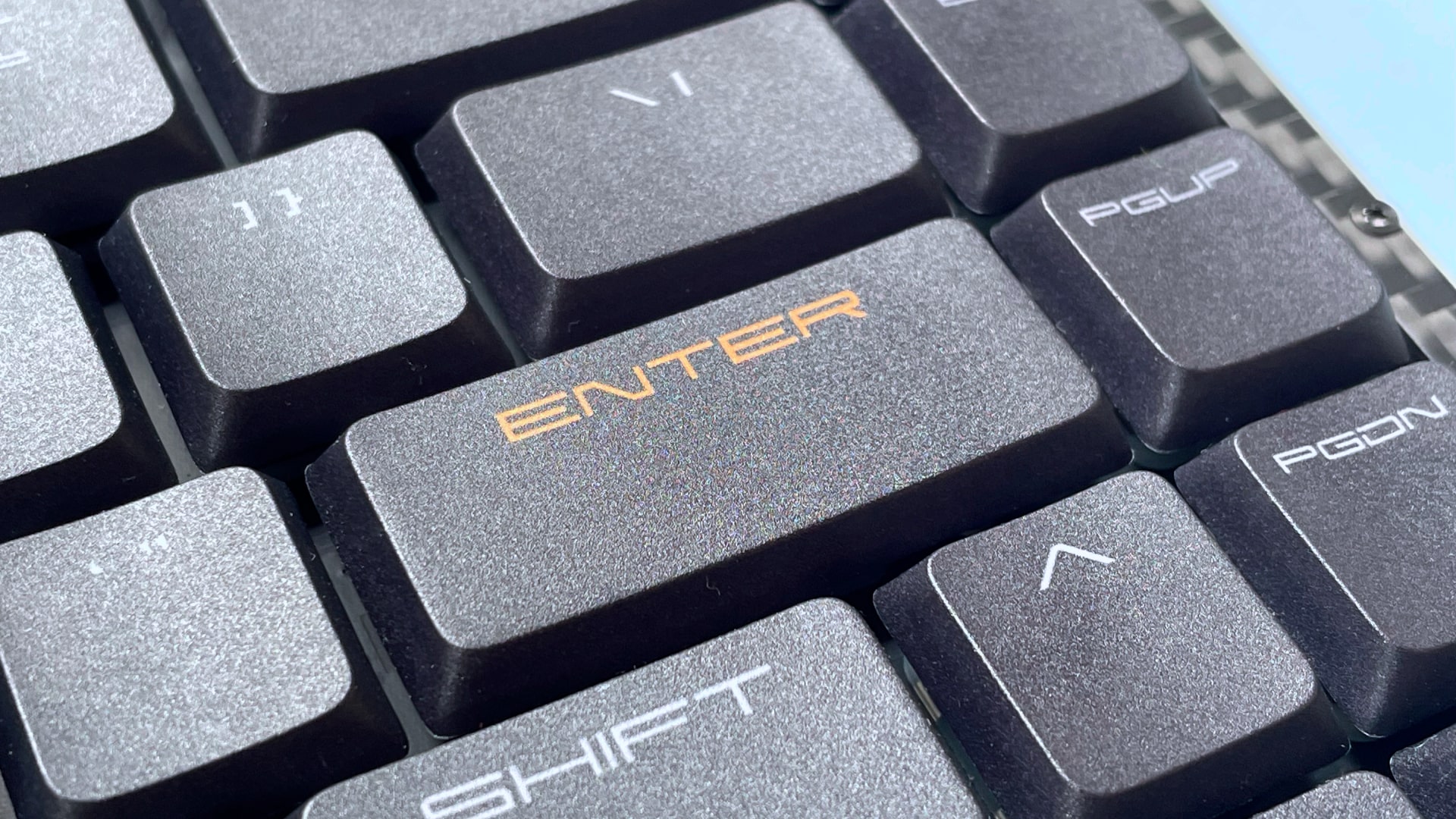
The Lofree Edge is currently available on Kickstarter, where the price is listed as $129. That translates to about £102/$195 AUD. The Kickstarter page indicates that the regular price will be $249 (about £198/$376 AUD) once crowdfunding is over.
That regular price will make it expensive, even for normally pricey mechanical keyboards, and much costlier than the $159 Lofree Flow. The reduced crowdfunding price is more reasonable.
Should you buy the Lofree Edge?
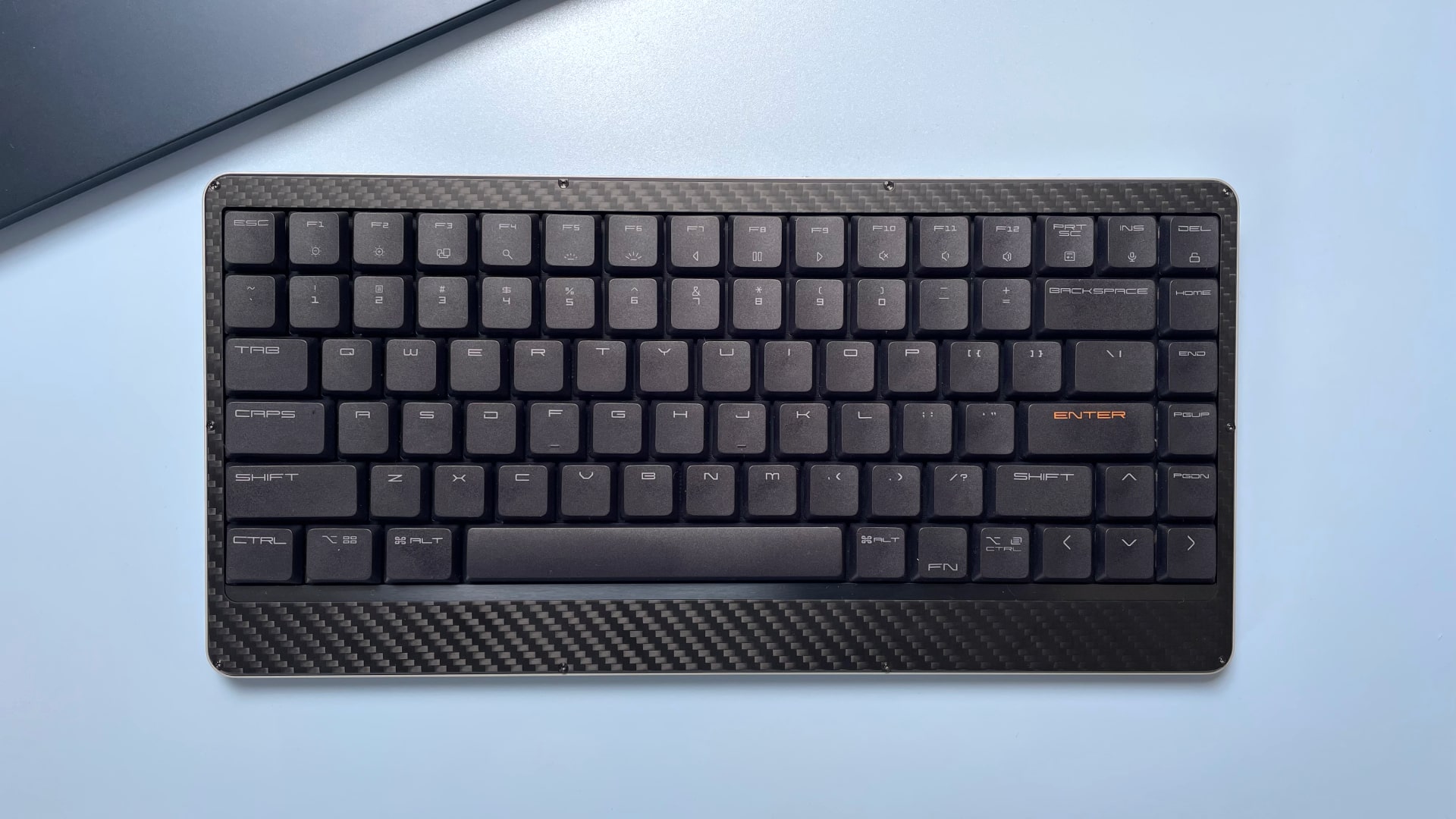
Buy the Lofree Edge if...
Don't buy it if...
Lofree Edge: Also consider
How I tested the Lofree Edge
I tested the Lofree Edge over the course of about a week. This included writing articles, browsing the web, and playing games. I used the keyboard on both Windows and macOS and tried switching between different devices and layouts on the go.







